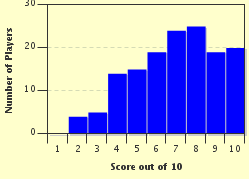Quiz Answer Key and Fun Facts
1. This beautiful image is from which famous funerary papyrus found in many ancient Egyptian tombs?
2. Which of the following thing about The Great Sphinx is known for sure?
3. Women had no legal rights or legal protection in ancient Egypt.
4. What is the name of this ancient relic, rediscovered in 1799, that helped provide the key to understanding ancient Egyptian hieroglyphics?
5. Which falcon-headed god/goddess of the sky is depicted in this painting from a 12th century BC tomb?
6. This photo of Pharaoh Seti I depicts an example of which of the following?
7. One of the most recognizable symbols of ancient Egypt is this beautiful bust of which of the following Egyptian queens?
8. The Edwin Smith papyrus is the world's oldest example of which of the following?
9. Today, this city is known as Luxor, but what was the name of this ancient settlement which is home to numerous temples and mausoleums?
10. One of the oldest of Egypt's pyramids is the Step Pyramid of Djoser. Where was the Pharaoh's body placed in this crypt?
Source: Author
dcpddc478
This quiz was reviewed by FunTrivia editor
bloomsby before going online.
Any errors found in FunTrivia content are routinely corrected through our feedback system.

